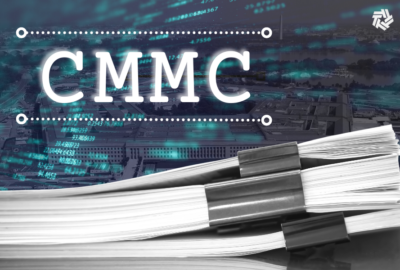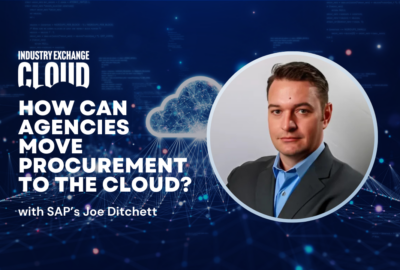Part 2: Unique needs, high fees propel increases in agencywide contracts
DHS, VA say they need their own multiple award contracts because they want vendors who are familiar with their processes and requirements. Others say agencies w...
wfedstaff | June 3, 2015 1:51 am
The proliferation of multiple award contracts across the government over the last 15 years can’t be attributed to just one reason. But the undercurrent that many federal and industry officials often point to is money and poor customer service.
Agencies especially over the past 10 years realized how much money they were paying to use fee-for-service contracts from the General Services Administration, the Interior Department’s National Business Center, NASA and the National Institutes of Health. And during that time, GSA, which is by far the largest provider of governmentwide contracts, faced scrutiny from its own inspector general and that of its largest customer-the Defense Department-for how it was managing the money and contracts.
DoD at one point was spending up to $150 million a year on fees with GSA alone. The Pentagon led the thinking that the money could be put toward the mission instead of fees if the it developed its own multiple award contract, and many agencies followed suit.
“What has changed is growth in the use of indefinite delivery, indefinite quantity contracts by agencies,” says Alan Chvotkin, senior vice president for the Professional Services Council, an industry association. “When they were first formed in late 1990s, the effort was to streamline the process to get from task to award more quickly by using pre-qualifications. I think there was very little expectation we would have tens of millions or billions of dollars in ceilings or task orders. But as the mission grew and the workforce remained static or shrunk, the ability to use multiple award contracts grew and grew. And now it is the vehicle of choice for most agencies.”
The second part of the issue for the growth in MACS is customer service. As GSA’s business grew to $65 billion in 2009 from about $35 billion in 2000, the perception at least was the agency didn’t keep up with customer needs.
One agency executive when asked why their agency was developing their own contract instead of using one that GSA runs, said quite candidly, “Their customer service isn’t any good so why would we want to use them.”
Some vendors and other agencies also say their experience with GSA is rarely good.
None of these executives would go on the record because they didn’t want to be seen as critical of another agency or customer.
“In many cases, an agency’s perception of GSA or any other GWAC or MAC is based on past performance information they have, correct or incorrect,” Chvotkin says. “One bad experience may sour an activity and therefore they have no confidence. Activities like GSA have an enormous hill to climb to demonstrate value time and again.”
And it seems GSA recognizes that this perception exists. Administrator Martha Johnson has made it a priority for GSA to be more intimate with their customers.
“Administrator Johnson charged us with being better and we will be better,” says Ed O’Hare, GSA’s assistant commissioner of the Integrated Technology Services Office in the Federal Acquisition Service. “Customer service is problematic in the schedules world and that is where I need to solve the problems.”
Despite this perception, O’Hare says GSA continues to receive good reviews on its annual customer satisfaction survey. He says these surveys are done by a third party on behalf of the agency.
- GWACs: 78 percent satisfaction in 2009; target for 2010, 81.8 percent
- Network services: 73 percent in 2009, target for 2010, 73.4 percent
- Schedules: 67 percent in 2009, target for 2010, 70.9 percent
Jim Williams, the former commissioner of FAS, says the customer service complaint doesn’t hold water.
“I wish we could get past this customer service issue,” he says. “What does it mean to have customer service in GWAC mode? The only time a customer agency would ever come to GSA is to modify an umbrella contract. But most of the time when you’re buying services such as under Alliant, which is extremely broad, you don’t need to modify the contract. GSA said if the customer wants them to review their work, GSA will do it for free. Otherwise, the agency doesn’t need to talk to GSA. Where customer service problem in that?”
Williams says even the complaint about fees is weak. He says agencies pay no matter who does their acquisition work– GSA or the agency’s own employees, which have built in costs for salaries, benefits and expenses.
O’Hare adds that under Alliant, for instance, the fees are capped at $150,000 per year per task order, and the industrial funding fee for the schedule is less than one percent.
“There are a lot of misperception and misrepresentation about fees and costs,” O’Hare says. “We do have customers who use the schedules to do complex projects. We will give them additional services because the fee represents something we want to bring value back to them. We also do extra training for acquisition officers through our funding.”
So why do agencies continue to develop their own MACs? Williams says it’s the glory of running a large procurement.
But at least two officials at agencies, which are in the middle of such procurements now, say it’s more than just ego.
Soraya Correa, the Homeland Security Department’s director of the Office of Procurement Operations, says her agency is pursuing EAGLE 2 technology services contract for several reasons.
“It’s just I don’t believe, and many of us in the acquisition community, don’t believe that one size fits all,” Correa says. “Agencies the size of DHS sometimes have unique needs and have to have contracts in place to meet those unique needs. In DHS when we created EAGLE for IT services, it was written to support the CIO’s initiative to build the OneDHS infrastructure, and bring in companies that are familiar with our enterprise architecture and our processes.”
DHS released the draft request for proposals for EAGLE 2 earlier this month despite the fact GSA tried to convince them to move it under Alliant as a blanket purchase agreement.
Williams says he met with DHS CIO Richard Spires before he retired in April.
“Frankly while I don’t agree with [their decision to go on with EAGLE 2] , I’m not sitting in their position,” he says. “They listened and I was appreciative of that. I think we made a great offer.”
Correa says DHS looked at the fees to use GSA or other contracts and believes the agency saves money because of the efficiencies of running their own contract. But she also points out that DHS spends about 25 percent of their procurement budget through GSA.
“I don’t believe having your own contract is wasteful as long as you are managing the program effectively,” Correa says. “I’ve worked in other agencies, smaller ones that totally relied on GWACs. It depends on the agency and the complexity of its mission. Large agencies have unique needs and can’t just rely on schedules or GWACs. If a GWAC runs into any problems or administrative issues, we still have needs and we still have to fulfill those needs and it doesn’t make sense for DHS to wait for something to get extended or fixed to meet those needs.”
The Veterans Affairs Department echoes many of DHS’s same points when it comes to its new IT services contract, T4.
“VA identified a need to rapidly respond to gaps in requirements and to provide greater insight for industry into VA’s total IT needs,” says Iris Cooper, VA’s associate deputy assistant secretary for acquisition. “This includes familiarity with VA systems and processes, security requirements and support to the VA enterprise management framework.”
Cooper says VA believes it will save money over time because T4 will be more streamlined and more competitive. She says VA has not had any conversations with GSA about using Alliant.
“Use of a vehicle tailored to VA needs and a set of contractors who have insight into VA needs, processes and requirements will provide benefits to the Veteran community through efficient execution and better solutions,” she says. “T4 provides more business opportunities for service disabled veteran-owned small businesses and veteran-owned small businesses.”
But one industry executive from a large government contractor, who requested anonymity because they were not approved to talk about this subject, says most vendors have dedicated teams for agencies no matter where the contract lives-in the customer agency or in GSA.
Both DHS and VA bring up the need to have vendors familiar with their needs. But a comparison of contractors between Alliant and EAGLE shows that 20 companies hold both contracts, meaning DHS, for instance, already has access to many of the vendors who Correa says are familiar with the agency.
Correa admits that there is significant duplication of large businesses, but it’s the small firms that she says make the difference as a reason to have their own contracts.
But O’Hare says Alliant provides just as many opportunities for small businesses with 72 vendors on the contract.
O’Hare and Williams are clear that they don’t want GSA to a mandatory source for all agencies. But they also believe that the costs both real and hidden are wasteful and could be better spent on mission specific contracts, not general IT services.
For more, see the Contract Overload series page.
(Copyright 2010 by FederalNewsRadio.com. All Rights Reserved.)
Copyright © 2024 Federal News Network. All rights reserved. This website is not intended for users located within the European Economic Area.
Jason Miller is executive editor of Federal News Network and directs news coverage on the people, policy and programs of the federal government.
Follow @jmillerWFED






